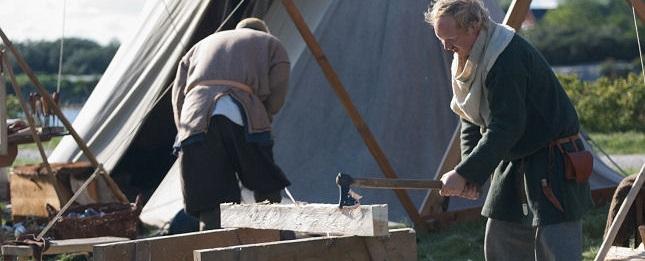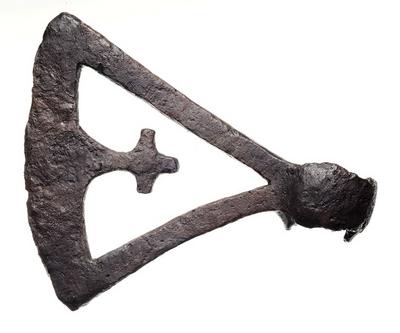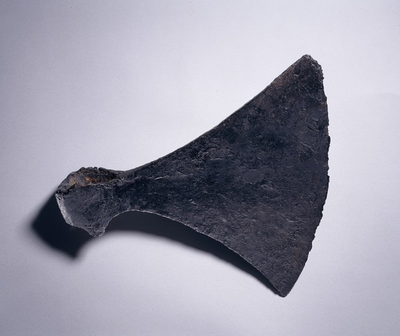Viking axes

In a period when almost everything was constructed of wood, it is unsurprising that a large number of different axes existed. These were mostly used as tools for the construction of ships, houses and carts, as well as other objects, so many different sizes and types of axes were required. The axe was also put to very effective use on the battlefield. Sometimes it is difficult to tell whether an axe was used as a weapon or a tool. Perhaps the Vikings used their ordinary woodworking axes as weapons if the situation demanded it?
“The Danish axe”
However, in some cases there is no doubt about an axe’s function. For instance, axe heads have been found at several locations of a type that points towards their use as weapons. Such axes are very thin, which means that, despite their large size, they are relatively light to wield. Contemporary illustrations indicate that they had a shaft measuring over 1 metre and were probably wielded with both hands. This type of axe is known as “the Danish axe”, or “Dane axe”, which reflects its popularity amongst the Danish Vikings.


Axes for all
Whilst the swords of the Viking Age were preserved for the use of just a few, many Vikings owned axes. They have been found in the richly furnished warrior graves of the Viking Age, as well as in simple graves, in which the deceased had little to accompany them on their last journey. All the axes are made of iron, but some are more elaborately decorated than others. The axe from the magnate’s grave at Mammen in Jutland, for example, is decorated with inlaid silver decoration. Another example of an axe that must have belonged to a magnate is the long-bladed axe from Over Hornbæk, near Randers. This is decorated with silver and copper inlay in patterns that possibly form an animal figure.
There were also the cross axes of the later Viking period. These mysterious axes had a partially solid head that featured a cross motif. Research indicates that such axes were robust enough for practical use. However, it is more likely that they were reserved for ceremonial purposes. The owners of these cross axes were not necessarily Christian, but the axes reflect the strong Christian currents that existed in this part of the Viking period.
Patterns from Mammen
The deceased magnate from Mammen was given a magnificent axe to accompany him in the grave. It is made of iron and decorated with silver inlay. However, the motifs present on the axe are somewhat ambiguous. Arguments can be made for both Christian and pagan (pre-Christian) motifs. On one side of the axe a tree is depicted. This can be interpreted as the pagan tree ”Yggdrasil”, but also as the Christian ”Tree of Life”.
The other side of the axe from Mammen displays a bird motif. The bird is either the rooster Gullinkambi (Old Norse “golden comb”) or the Phoenix. The rooster Gullinkambi, like Yggdrasil, belongs to Norse mythology. Gullinkambi sits on top of the tree Yggdrasil. His task is to wake the Viking warriors every morning and when Ragnarok comes he will crow. The Phoenix, on the other hand, is a symbol of rebirth belonging to Christian mythology. The motifs on the axe can therefore be interpreted as both pagan and Christian.

